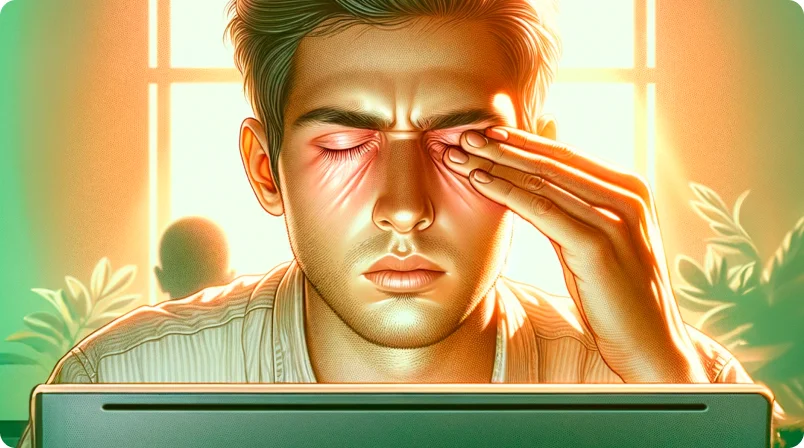
Mastering Migraines Gamers’ Guide to Headache Relief
Description:
Explore the intricate connection between migraine headaches and the gaming world. Learn how these painful episodes affect gamers and discover effective strategies to mitigate their impact on your gaming experience.
Introduction:
Here you can provide a brief overview of the topic, explain why it is essential for gamers, and present the main points that will be covered in the article.
Understanding Migraine Headaches
- Definition of Migraine Headaches: Migraines are debilitating headaches characterized by intense pain, often accompanied by nausea, vomiting, and sensitivity to light and sound. Understanding the nature of these headaches is crucial for gamers seeking relief during gaming sessions.
- Different Types of Migraines:
- Common Migraine: Also known as a migraine without aura, it involves moderate to severe pain that can last for hours or even days.
- Classic Migraine: This type is identified by the presence of an aura, which includes visual disturbances like flashing lights or zigzag lines before the onset of the headache.
- Vestibular Migraine: Involving dizziness and problems with balance, this type can significantly impact a gamer’s ability to focus during play.
- Triggers of Migraine Attacks:
- Stress: High-stakes gaming situations and competition can contribute to heightened stress levels, potentially triggering migraines in susceptible individuals.
- Dietary Factors: Certain foods and additives, such as caffeine, artificial sweeteners, and tyramine found in aged cheeses, can act as triggers for migraines.
- Sleep Deprivation: Irregular sleep patterns, common among gamers, may contribute to increased susceptibility to migraine attacks.
Migraines and Gaming: The Connection
- Prevalence of Migraines Among Gamers: Research indicates that gamers may experience a higher incidence of migraines compared to the general population, emphasizing the need for tailored solutions within the gaming community.
- How Gaming Habits Can Exacerbate Migraine Symptoms:
- Screen Time and Eye Strain: Prolonged exposure to screens can strain the eyes, exacerbating migraine symptoms. Implementing regular breaks and the 20-20-20 rule (looking at something 20 feet away for 20 seconds every 20 minutes) can help alleviate eye strain.
- Caffeine and Gaming: While caffeine is a common gaming stimulant, excessive consumption can trigger migraines. Balancing caffeine intake and staying hydrated is essential for headache prevention.
- Gaming in Low-Light Environments: Playing in dark or poorly lit rooms can strain the eyes and contribute to headaches. Optimal lighting conditions are crucial for reducing the risk of migraines.
The Impact of Migraines on Gaming Performance
- Cognitive Impairments During Migraine Attacks: Migraines can lead to cognitive difficulties, affecting concentration, decision-making, and reaction times during gameplay.
- How Migraines Affect Reaction Time: The neurological effects of migraines can compromise a gamer’s reaction time, potentially influencing performance in fast-paced and competitive gaming scenarios.
- Competitive Gaming and Migraine Challenges: Professional gamers may face additional challenges, such as adhering to tight schedules and participating in high-pressure tournaments, further intensifying migraine-related issues.
Coping Strategies for Gamers with Migraines
- Identifying Migraine Triggers Specific to Gaming: Understanding personal triggers related to gaming habits allows individuals to make informed adjustments, minimizing the risk of migraine attacks.
- The Importance of Proper Ergonomics: Maintaining an ergonomic gaming setup, including an adjustable chair, proper screen height, and wrist support, can contribute to overall comfort and reduce the likelihood of migraines.
- Gaming-Related Dietary Modifications: Adopting a migraine-friendly diet by avoiding known triggers and staying well-hydrated supports headache prevention while gaming.
- Tips for Managing Stress While Gaming: Implementing stress-management techniques, such as mindfulness, deep breathing exercises, and regular breaks, can help reduce stress-induced migraines.
Seeking Professional Help
- When Should a Gamer Consult a Doctor for Migraines?: Persistent or severe migraines warrant consultation with a healthcare professional. Gamers should seek medical advice if migraines significantly impact their quality of life or gaming performance.
- The Role of Neurologists in Managing Migraines: Neurologists specializing in headaches can provide tailored strategies and medications to manage migraines effectively.
- Medications and Therapies for Migraine Management: From preventive medications to acute treatment options, a healthcare provider can prescribe interventions based on the individual’s specific migraine patterns.
Preventive Measures for Migraine-Prone Gamers
- Mindfulness and Relaxation Techniques: Incorporating mindfulness meditation and relaxation exercises into a daily routine can reduce overall stress levels, decreasing the likelihood of migraine attacks.
- Hydration and Its Impact on Migraine Prevention: Maintaining proper hydration is crucial for migraine prevention. Gamers should prioritize regular water intake to support overall health and reduce headache risk.
FAQ
- What are the early signs of a migraine attack?
- Can gaming-induced migraines lead to long-term health issues?
- Are there specific games or genres that trigger migraines more than others?
- How does caffeine intake affect migraines in gamers?
- What are some effective non-pharmacological methods to alleviate migraine symptoms while gaming?
Key points
References
- WikiHow - Prevent Headaches While Playing Video Games
- Glen Park Dental - What's Causing Your Video Game Headaches?
- TMJ Treatment SC - Causes of Video Game Headaches
- Excedrin - Why Video Games Make You Feel Sick
- Esports Healthcare - Migraine Headaches and Gaming
- OS Gamers - Can Video Games Cause Headaches
- Esports Healthcare - Tension-Type Headaches
